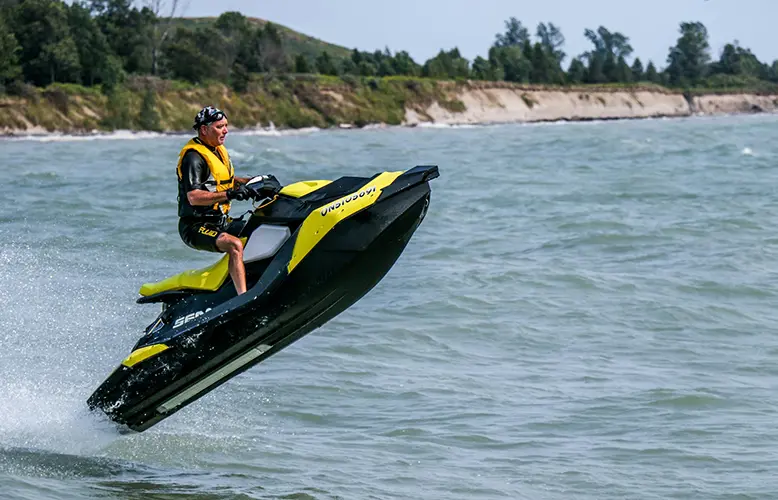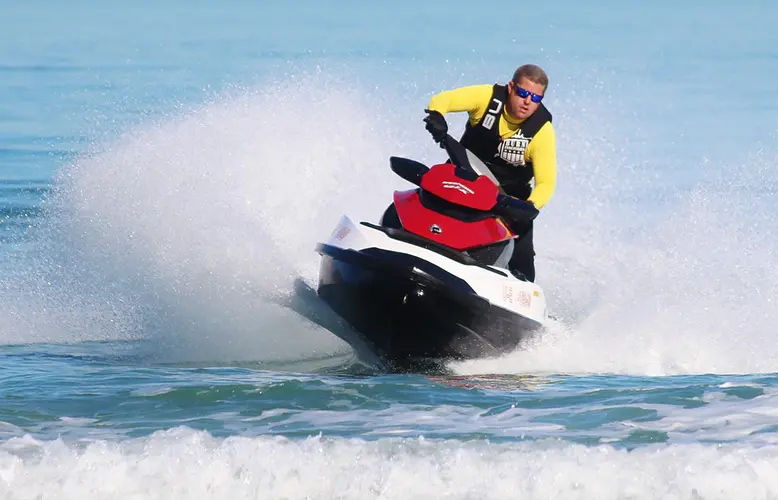Jet skiing is a thrilling water sport combining speed, agility, and the exhilaration of being out on the open water. Whether you’re a seasoned jet ski enthusiast or a beginner looking to dive into aquatic excitement, there are always ways to enhance your experience. This article explores a variety of tips and tricks to take your next jet ski adventure to new heights. From safety measures to advanced riding techniques, these insights will help you make the most of your time on the waves.

Do Your Research
Before you rev up your jet ski engine and hit the water, investing some time in research is essential. You may not need to own a jet ski to enjoy this activity. You can rent a Jet Ski from local rental providers or water sports centers. Researching reputable rental services in the area will help you find well-maintained jet skis and ensure a hassle-free experience. Look for customer reviews, ask for recommendations from local enthusiasts, and inquire about the rental company’s safety protocols and equipment maintenance. Additionally, know the specific model of jet ski you’ll be renting, as different models may have unique features and handling characteristics. Researching rental options ensures you have a reliable watercraft and helps you make an informed decision that aligns with your skill level and preferences.
Safety First
It’s crucial to prioritize safety. Jet skiing can be a high-speed activity, and with being on the water, there’s always an extra layer of risk. Follow these safety tips to ensure a secure and enjoyable experience:
- Wear Proper Safety Gear: Equip yourself with a U.S. Coast Guard-approved life jacket, a wetsuit if needed, gloves, and sturdy footwear. Safety gear is your first line of defense in case of an accident.
- Know the Rules and Regulations: Familiarize yourself with local waterway regulations and specific rules for jet skiing. Respect speed limits, no-wake zones, and any other guidelines established by authorities.
- Take a Boating Safety Course: If you’re new to jet skiing, consider taking a boating safety course covering essential topics such as navigation, right of way, and emergency procedures.
- Check Weather Conditions: Before heading out, check the weather forecast. Avoid venturing into rough waters, storms, or high winds that can compromise your safety.
- Use a Safety Lanyard: Always attach the safety lanyard to your wrist or life jacket. This ensures the engine cuts off if you fall off, preventing the jet ski from becoming a runaway vessel.
Jet Ski Maintenance
Maintaining your jet ski is crucial for both performance and safety. Regular upkeep ensures a smooth ride and prevents potential issues that could arise during your adventure. Before each ride, examine the hull for cracks, dents, or other damage. Even minor issues can affect the jet ski’s performance and stability. Inspecting for oil and fuel leaks ensures the engine is in good condition. Change the oil and filter regularly, and follow the manufacturer’s maintenance schedule. Inspect the jet pump for debris or damage. Rocks, seaweed, or other foreign objects can affect the jet ski’s propulsion system. Make sure the fuel system is clean and functioning correctly. Check fuel lines, filters, and the fuel tank for any signs of wear or leaks. Also, check all electrical components, including lights, gauges, and the battery. Ensure that all connections are secure and free of corrosion.
Riding Techniques for Beginners
If you’re new to jet skiing, mastering the basics is essential for a safe and enjoyable experience. Mount your jet ski from the side, keeping your weight centered. When dismounting, approach the dock slowly and step off one foot at a time. Sit firmly on the seat with your knees slightly bent and feet forward. Hold onto the handlebars with a relaxed grip, keeping your elbows bent. Gradually squeeze the throttle to accelerate and release it to slow down. Avoid jerky movements to maintain control over the jet ski. To turn, shift your weight to the side you want to go and gently steer in that direction. Practice turning in both directions to get a feel for the jet ski’s handling. In an emergency, release the throttle, press the stop button, or pull the engine shut-off cord. This brings the jet ski to a quick stop.
Advanced Riding Techniques
For those seeking a more exhilarating jet ski experience, consider incorporating these advanced riding techniques:
- Mastering Power Slides: Power slides add flair to your maneuvers. To execute a power slide, accelerate into a turn, then release the throttle and turn sharply. Once the jet ski begins to slide, apply throttle to maintain control.
- Jumping Waves: Riding waves can be thrilling, but it requires skill. Approach waves at an angle, bend your knees, and use your legs as shock absorbers to soften the impact.
- 360-Degree Spins: Practice 360-degree spins in open water. Start by making gradual turns and progressively increasing speed until you can execute a complete spin.
- Riding in Rough Waters: If you’re comfortable with your jet ski skills, challenge yourself by riding in choppy waters. Keep a firm grip on the handlebars, bend your knees, and use your legs as shock absorbers.
- Towing and Rescue Techniques: Learn how to safely tow a person or another watercraft. Familiarize yourself with rescue techniques, such as helping someone back onto the jet ski.
Environmental Responsibility
Responsible jet skiing goes hand in hand with preserving the beauty of our waterways. Jet ski in designated zones to avoid disturbing wildlife and ecosystems. Be aware of sensitive areas and adhere to any restrictions in place. Reduce your speed near shorelines and sensitive areas. The wake generated by high-speed jet skis can erode shorelines and disturb aquatic habitats. Dispose of trash and waste responsibly. Carry a waterproof bag to collect trash generated during your ride and dispose of it properly when you return to shore. Keep safe from wildlife, such as nesting birds and marine animals. Noise and disruption can have adverse effects on their habitats. Share responsible jet skiing practices with fellow enthusiasts. By raising awareness, we can collectively preserve our waterways for future generations.

Jet skiing is a thrilling adventure that offers a unique blend of speed, skill, and connection with nature. By prioritizing safety, maintaining your jet ski, mastering riding techniques, and practicing environmental responsibility, you can take your jet ski adventures to the next level. Whether a beginner or an experienced rider, there’s always room to enhance your skills and make the most of your time on the water. So, gear up, follow these tips, and prepare for an unforgettable jet ski experience!





